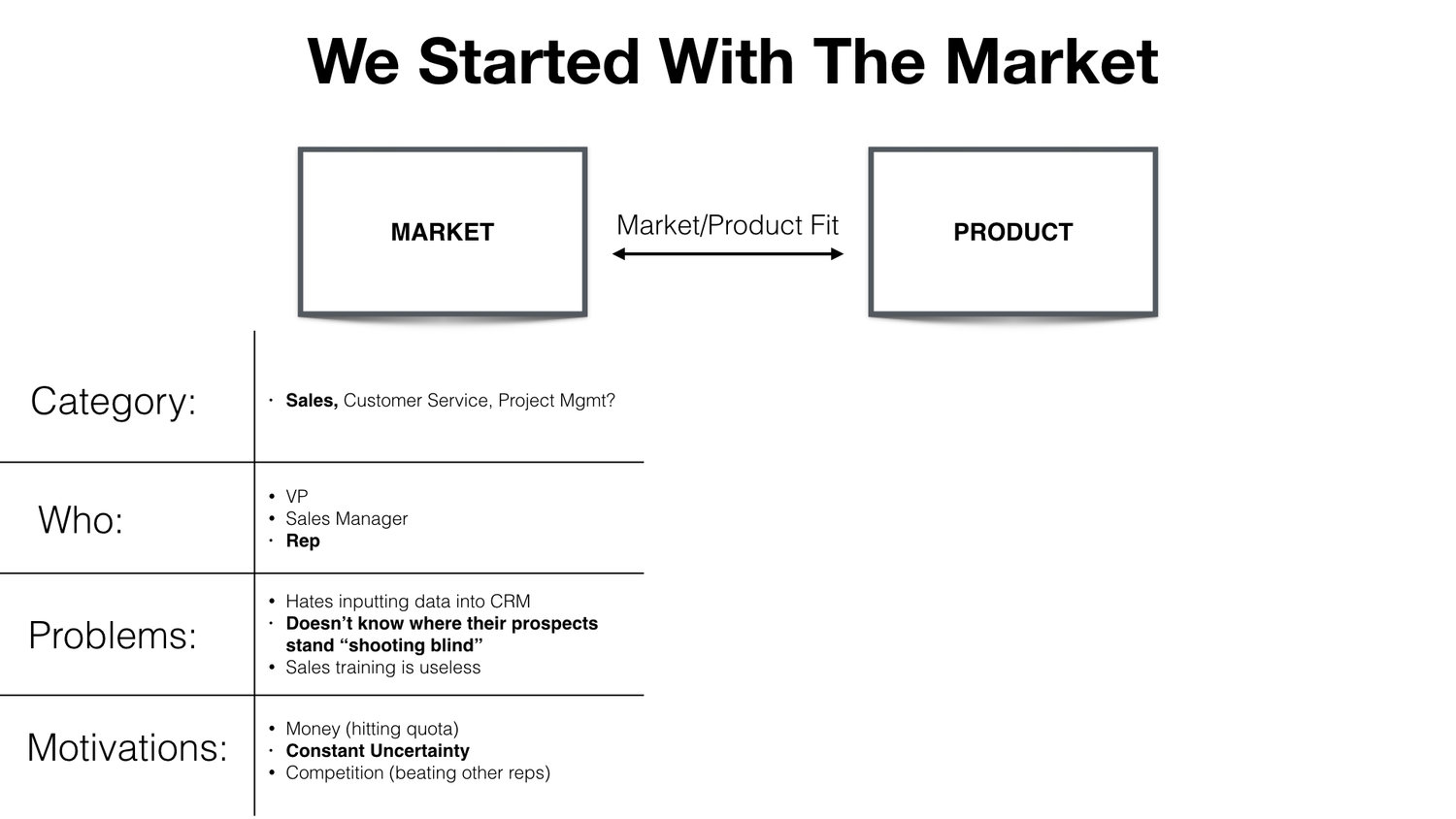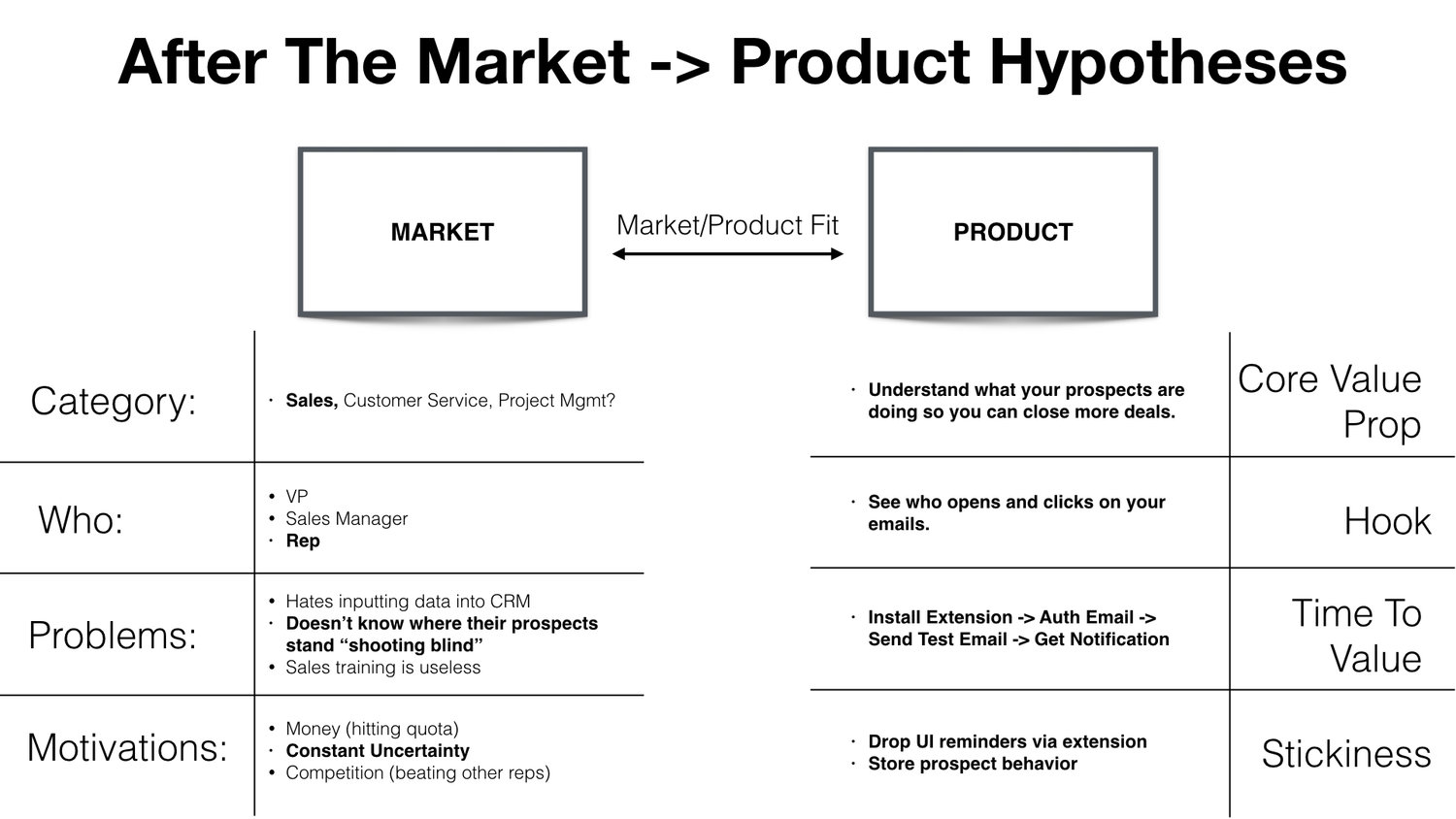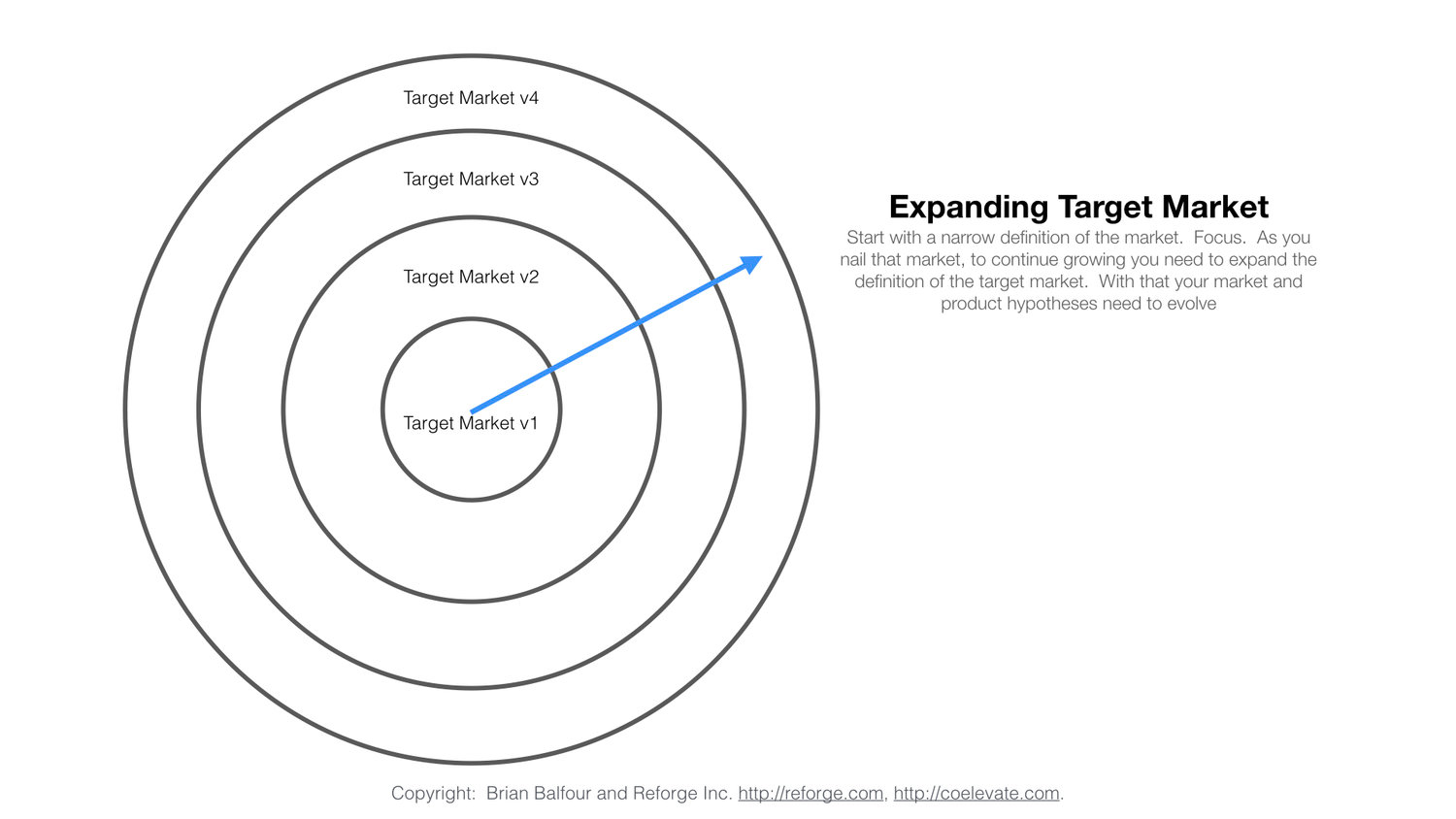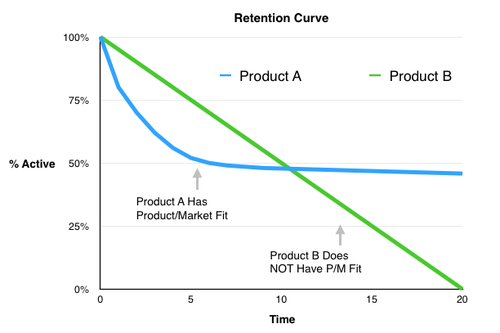The Road to a $100M Company Doesn’t Start with Product
About
- Author: Brian Balfour
Overview
I’m going to focus on the 5 elements of Product Market Fit that I believe are most misunderstood and overlooked:
- The wrong way to search for Product Market Fit.
- Why we should be thinking about it as Market Product Fit.
- How we defined our market and product hypotheses for early versions of HubSpot Sales.
- What the search for market product fit looks like in reality, not just in theory.
- Qualitative, Quantitative, and Intuitive signals of market product fit.
Searching For Market Product Fit The Right Way
There were four key market elements that we looked at:
- Category. What category of products does the customer put you in?
- Who. Who is the target audience within the category? There are always multiple personas within a single category, so this breaks it down further.
- Problems. What problems does your target audience have related to the category?
- Motivations. What are the motivations behind those problems? Why are those problems important to your target audience?
Started with the market ATTACH
Here is what these four elements roughly looked liked for our HubSpot division:

After The Market -> Product Hypothesis ATTACH

These hypotheses are extremely important to lay out.
The Reality Of Searching For Market Product Fit
In practice, the search for market product fit is never a straight line. Instead, it happens over multiple cycles of iteration. You start with a market, build an initial version of the product, look at who actually gets value from the product, then redefine the market and redefine the product.
once we dug in, we found a lot more target personas outside of our sales audience hypothesis were getting deep value out of the product.
we refined the category, the who, the problem, and the motivations to what we were actually seeing.
Market -> Product Hypothesis Version Two ATTACH

Market Product Fit Is Not Binary
Market Product Fit is not binary. It’s also not a single point in time.
1. EXPANDING MARKET DEFINITION ATTACH
Most startups start with a very niche market and expand the definition of their market outwards into larger and larger markets.

2. THE MARKET EVOLVES
At the same time, markets don’t sit still. That means the markets with which you have strong Market Product Fit will evolve over time.
Signals Of Market Product Fit
how do you know if you have Market Product Fit? you need to combine qualitative measurements with quantitative measurements with your own intuition.
1. QUALITATIVE
To get a qualitative understanding, my preference is to use Net Promoter Score (NPS).
2. QUANTITATIVE ATTACH
two quantitative measures to understand Market Product Fit: Retention Curves and Direct Traffic. refer to The Never Ending Road To Product Market Fit

The second quantitative indicator is direct traffic. Direct traffic is typically the result of word of mouth.
The two combined (flat retention curves and direct traffic) mean that a product with Market Product fit will grow naturally without additional efforts like paid marketing.
3. INTUITION
Peter Reinhardt, founder/CEO of Segment, who I think has had the best description of how Market Product Fit feels:
“Product market fit doesn’t feel like vague idle interest. It doesn’t feel like a glimmer of hope from some earlier conversation. It doesn’t feel like a trickle of people signing up. It really feels like everything in your business has gone totally haywire. There’s a big rush of adrenaline from customers starting to adopt it and ripping it out of your hands. It feels like the market is dragging you forward.
I think the Dropbox founders said this best that product market fit feels like stepping on a landmine…when we did find product market fit, I thought for sure, this is too tiny to matter but it actually solved a real problem and the market demanded it and ripped it out of our hands.”
The Key Points
- Start with the market (problem), then the product (solution). Not the other way around.
- Define your market hypothesis using Category, Who, Problems, Motivations with most of your work going into Problems/Motivations.
- Define your product hypothesis using Core Value Prop, Hook, Time To Value, Stickiness.
- Think of Market Product fit as a cycle.
- Understand that Market Product fit is not binary. Instead, it’s a spectrum of weak to strong.
- To understand if you have Market Product Fit, combine the qualitative, quantitative and intuitive indicators.